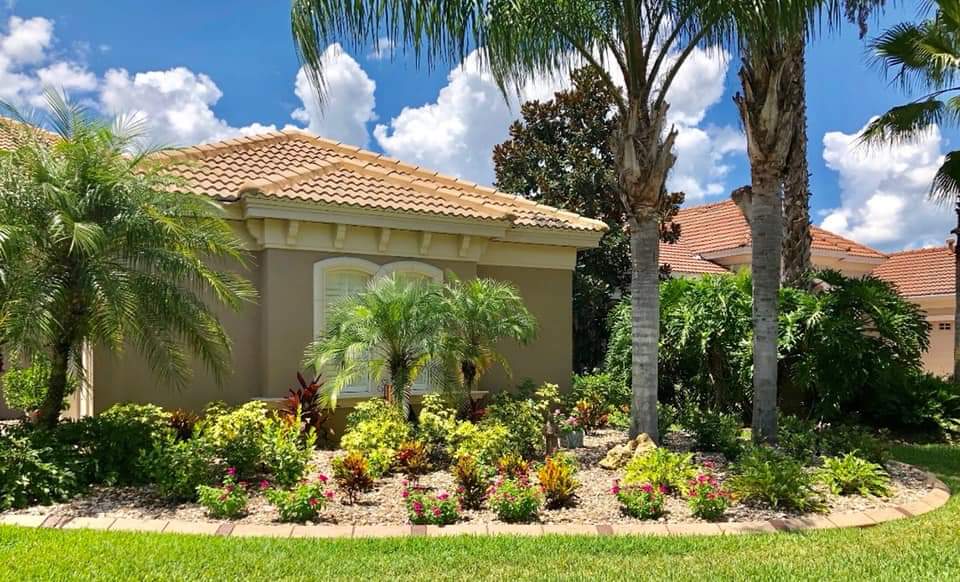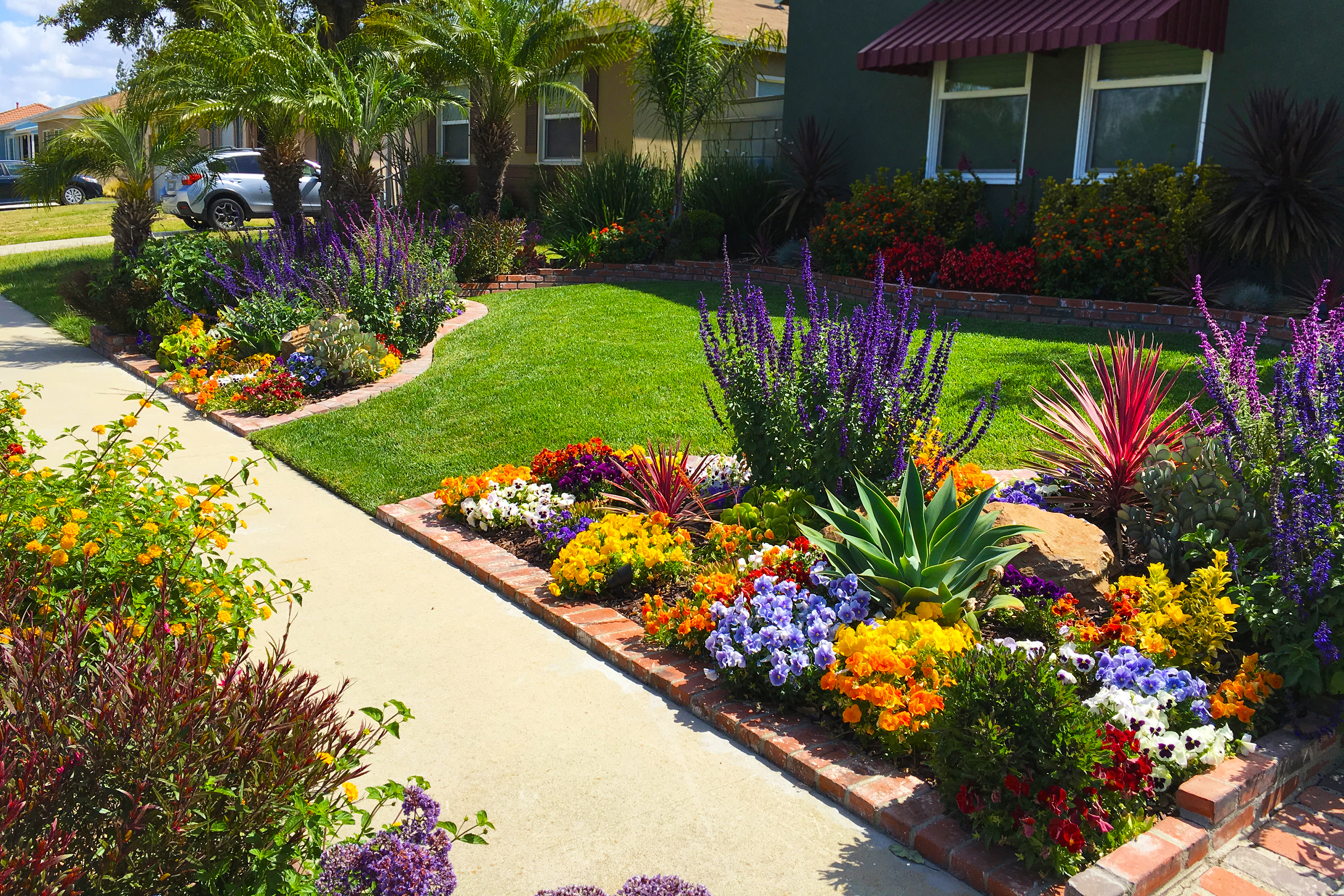A Comprehensive Overview to Creating and Implementing Effective Landscape Design Solutions
The art and science of landscape design prolong past mere aesthetics; they entail a thoughtful assimilation of style principles, ecological stewardship, and useful application. A detailed overview to reliable landscape design solutions begins with an in-depth understanding of your exterior area, stressing the relevance of percentage, equilibrium, and unity. As we check out lasting techniques and the choice of suitable plants, the implications for biodiversity and neighborhood wellness come to be progressively obvious. What methods can one utilize to make sure these landscapes not just thrive yet likewise thrive attuned to their surroundings?

Comprehending Landscape Layout Principles
One might question what foundational components add to effective landscape design. At its core, successful landscape layout rests on numerous essential concepts that direct the arrangement and choice of components within a room. These concepts consist of unity, balance, rhythm, and percentage, each offering to develop an unified exterior setting.
Unity describes the natural connection among numerous parts, making certain that they interact aesthetically and functionally. Balance can be accomplished with balanced or asymmetrical plans, permitting the landscape to really feel secure and inviting. Proportion entails comprehending the range of components in connection with each various other and the surrounding atmosphere, advertising aesthetic harmony and convenience.

Analyzing Your Outdoor Area
Before implementing the concepts of landscape design, an extensive assessment of your outdoor room is vital. This first assessment assists define the extent of your landscaping project and ensures that your design aligns with the unique features of your residential or commercial property. Begin by examining the measurements of your area, taking accurate measurements to recognize the available location for numerous components such as pathways, gardens, and outdoor patios.
Next, observe the existing functions of your landscape, including topography, dirt high quality, and drain patterns. These variables considerably influence plant choice and placement. In addition, analyze the sunshine direct exposure across different locations throughout the day, as this will impact the sorts of plants that thrive in your yard.
Think about the microclimates created by structures, trees, and various other challenges, as they can affect temperature level and wetness degrees. Last but not least, bear in mind of any kind of existing plants or hardscape components that you want to preserve or eliminate. This comprehensive analysis prepares for a well-informed and efficient landscape design option, making certain that your design is not only aesthetically pleasing but lasting and also useful for several years ahead.
Sustainable Landscaping Techniques
These methods not only advertise eco-friendly equilibrium however additionally improve the functional and visual value of a landscape. Carrying out effective irrigation systems, such as drip watering, minimizes water waste and makes sure that plants obtain appropriate dampness (Palm Desert Landscaping).

Another efficient technique is the strategic positioning of trees and hedges to supply natural windbreaks and shade, hence lowering energy costs (Palm Desert Landscaping). Rain gardens can be incorporated right into the landscape design to take care of stormwater drainage effectively, filtering toxins prior to they go into waterways
Picking the Right Plant Kingdoms
Picking the right plants for your landscape is critical to accomplishing both aesthetic allure and ecological harmony. The process begins with an understanding of your regional climate, dirt conditions, and the certain microenvironments within your landscape. Examining factors such as sunlight exposure, wetness levels, and existing vegetations will help you choose plants that thrive in your distinct setting.
Think about including native plants, as they are well-adapted to regional conditions, call for less upkeep, and assistance local wild animals. Additionally, choosing a varied array of types can enhance biodiversity while decreasing the risk of disease and pest break outs. It is vital to review the development habits, flowering periods, and seasonal colors of prospective plants to develop a cohesive and dynamic landscape.
Moreover, think of the intended use the room; for instance, if the location will certainly experience high foot traffic, go with durable ground covers. By attentively picking plants that line up with both your environmental needs and visual goals, you can produce a lasting landscape that not only enhances your home however also contributes positively to the surrounding community.

Implementation and Maintenance Strategies
Once the best plants have been selected for your landscape, the focus changes to reliable execution and continuous maintenance strategies. Effective installation begins with appropriate website prep work, that includes soil screening to establish nutrient levels and pH, followed by amending the dirt as needed. Thoroughly set up plants according to their growth routines visit this site right here and light requirements, ensuring adequate spacing to advertise healthy growth.
Watering is a crucial element of implementation. Develop a watering schedule that takes into consideration the certain requirements of each plant varieties, changing for seasonal modifications. Using drip watering systems can improve water effectiveness and lower overflow.
Maintenance strategies should be applied to guarantee the durability and vigor of your landscape. Normal tasks include weeding, mulching, and pruning to regulate development and stop condition. Fertilization must be conducted based on dirt examinations, supplying the necessary nutrients without over-fertilizing.
Checking for pests and illness is important; early discovery can avoid significant damages. Seasonal adjustments to maintenance routines, such as winterizing perennials and preparing for spring development, will certainly make sure that your landscape stays aesthetically appealing and healthy and balanced year-round.
Final Thought
Successful execution and continuous maintenance further read more make sure the longevity and vigor of landscapes. By integrating these components, landscapes can be changed into stunning, practical settings that advertise biodiversity and add positively to community wellness.
One could wonder what fundamental elements add to reliable landscape layout. At its core, effective landscape layout pivots on a number of vital principles that guide the setup and option of components within an area.Choosing the right plants for your landscape is essential to achieving both visual allure and environmental consistency. It is necessary to review the growth behaviors, blooming periods, and seasonal shades of possible plants to produce a cohesive and vibrant landscape.
When the appropriate plants have actually been chosen for your landscape, the focus shifts to reliable execution and continuous upkeep methods.